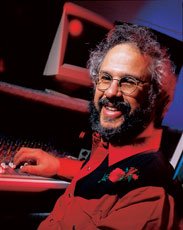By Steve Oppenheimer
(November 2004)
The history of the record business is a cyclical one, in which many small labels consolidate but then a plethora of new labels arises. Initially, there were plenty of small labels. The first round of consolidation, to my knowledge, happened when RCA bought Victor and HMV merged with Columbia Graphophone to form EMI. But more new labels sprung up because it was fairly easy to start a record company then. First we had variety, then consolidation, then variety again. The pattern has been repeating ever since. During all cycles, however, the vast majority of musicians reaped few financial rewards from their recording careers.
Today, a variety of small labels still abound, but most have a tough time getting airplay — the traditional way of promoting new music. Recording musicians and indie labels would be in a much worse squeeze except for two saving factors: the evolution of the professional-caliber personal studio and the growth of the Web. With pro-quality, low-cost recording in hand and the Web as a marketing and distribution tool, we can create our own profitable record labels. We are in the variety part of the cycle again, this time with a chance to make it last, even though the mainstream media and major labels are still consolidating. That’s because we finally have a viable and affordable alternative marketing tool that serves as a sales and distribution system — and that has been the missing piece all along.
The Web enables us to reach our audience directly. We don’t even have to get our music into record-store chains, although we do have to find creative ways of promoting our sites and sounds. We can create Web sites that are at least the equals of anything the large labels have. That said, the big labels can still promote their product in ways that the rest of us can’t, and they still have a near lock on radio airplay. The majors will retain the big-name acts.
However, there may be leveling forces at work. Webcasting could eventually prove a viable alternative to radio, especially when most people are able to receive Webcasts in their vehicles. Musicians who don’t care about superstardom will increasingly be able to find success without playing the major-label game at all.
Of course, to sell and distribute our music on a larger scale and be the masters of our Web sites, we have to know something about Web design, HTML, and even search-engine optimization. We also need to understand how to make streaming audio work, but that’s the sort of skill many electronic musicians will enjoy learning. Whether to provide promotional clips for consumers to audition or to create a full-blown Webcast, it pays big dividends to make your music stream properly.
To this end, we’ve taken a fresh look at streaming and other Web-related topics in Thad Brown’s “World Wide Waveforms” on p.42. So settle in and get ready for a story that will help you propel your music into the Webstream.
